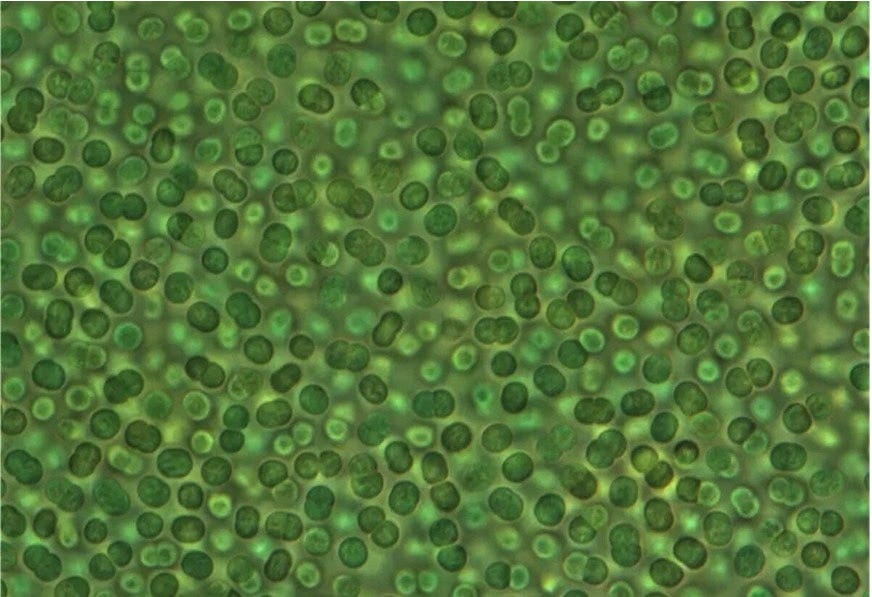Innovation Bites: A Big Deal From Europe
Featuring algae, a new climate study and European Industrial Policy this week
Welcome to Innovation Bites, a quick run-down of exciting new innovation developments that you might have missed.
First, two quick hits:
a/ Good news in small places.
Meet Chonkus, a newly discovered blue-green algae that sucks up carbon dioxide.
What makes it unique?
It’s large and heavy, grows faster than normal, and absorbs more CO2 than typical algae strands. If left in the oceans, it’s heavier-than-normal structure lets it fall to the seafloor, where its stored carbon will lie locked away for centuries. (It can also be used as the food spirulina.)
b/ Some “Current” Good News.
According to recent research, the famous (as currents go) Atlantic Meridional Overturning Circulation (AMOC) is safe—for now. Even under severe climatic changes, the current is likely to survive until at least the later half of the century. Which is good if you live in the northern hemisphere—or particularly in Europe.
Of course, there’s still this:
“Unlikely isn’t impossible,” says Jonathan Baker, a co-author of the study and a climate scientist at the Met Office in Exeter, UK. “But we have confidence in our results.”
c/ Let’s Talk Industrial Policy!
When was the last time you were excited about tariffs and reporting directives? Well, check out Europe’s recently announced Clean Industrial Deal.
Key highlights:
Lower energy costs by speeding up the deployment of clean energy, increasing grid interconnections and improving energy efficiency—all with the goal of reducing dependence on fossil fuels.
A new €100bn ($105bn) Industrial Decarbonization Bank to support decarbonization projects & clean manufacturing
Increasing the demand for sustainable products through such initiatives as the new Decarbonization Acceletator Act
A push to incorporate circularity in to decarbonization efforts, with the goal of having 24% of materials be circular by 2030.
Why?
European manufacturing has fallen behind the US and China for years, and now suffers from energy costs often 3x higher than the US.
But Europe sees a strategy to compete: Bet on clean energy & industrial decarbonization and create a lead in the new marketplace that others will have trouble catching.
(Hmmm… Using sustainability to create a competitive advantage… where have I heard that before?)
Of note: The EU is stepping into the climate leadership vacuum opened up by the Trump administration’s decision to pull the US out of the Paris Agreement, halting IRA funding and drafting tariffs.
As with all EU legislation, the catch is implementation: The new policy must be passed by the European Parliament and ratified by a majority of member countries before taking effect, so changes to the details are likely. And there are a lot of details—it’s laudable to create an incentive framework for a sector like steel, but how those incentives are applied will make or break the policy’s effectiveness.
d/ Congratulations!
For making it through a discussion of European industrial policy, here’s a final bite—and this one’s good news: While the overall UK economy stagnates, the net-zero portion of the economy is growing like mad.
As the Chancellor of the Exchequer, Rachel Reeves, said recently:
“There is no tradeoff between economic growth and net zero. Quite the opposite. Net zero is the industrial opportunity of the 21st century.”
Whenever I see interesting climate and sustainability innovations and trends, I’ll include them in future editions of Innovation Bites. Subscribe now to ensure you never miss out!




